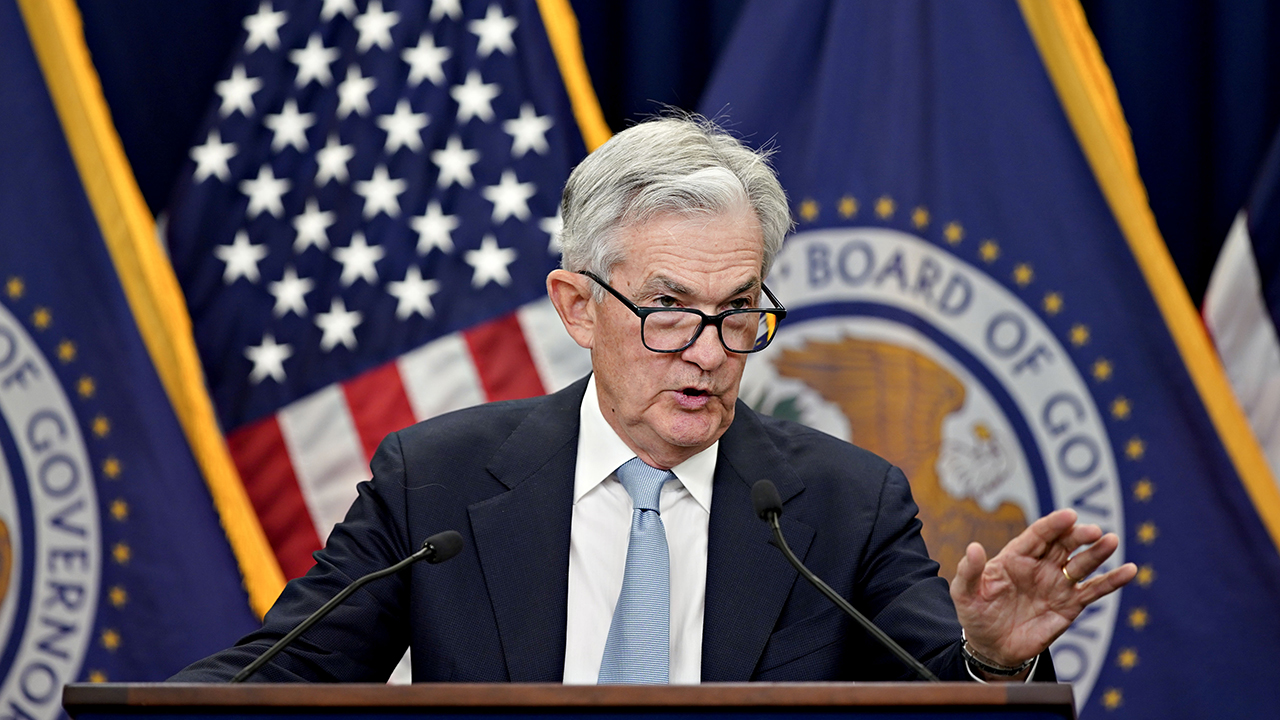When will the Federal Reserve start to cut interest rates?
Fed still expected to cut interest rates this year despite surprisingly hot December inflation report
Fed expectations 'realigned' after Jerome Powell's dovish remarks, analyst says
The Kobeissi Letter editor-in-chief Adam Kobeissi discusses market expectations for 2024 after the Dow Jones pulled back from a record high on 'Cavuto: Coast to Coast.'
The Federal Reserve ended 2023 with an unexpected pivot in policy.
Central bankers signaled in December during their final meeting of the year that their nearly two-year battle against inflation has finally come to an end — and that a series of rate reductions are in the pipeline.
Updated quarterly economic projections laid out after the meeting show that a majority of Federal Open Market Committee officials expect rates to fall to 4.6% by the end of 2024, suggesting that there will be at least three quarter-point rate cuts next year. Policymakers also penciled in additional rate cuts in 2025 and 2026.
"We are seeing strong growth that appears to be moderating, we're seeing a labor market that is coming back into balance by so many measures, and we're seeing inflation making real progress," Fed Chair Jerome Powell told reporters last month. "These are the things we've been wanting to see. We still have a ways to go. No one is declaring victory. That would be premature, and we can't be guaranteed of this progress."
FED'S FIGHT AGAINST INFLATION IS WEIGHING ON MIDDLE-CLASS AMERICANS
But traders are betting on even more aggressive rate cuts, starting as early as March, despite a hotter-than-expected inflation report and recent efforts by Fed policymakers to temper expectations. About 71.4% of investors are currently pricing in at least a quarter-point cut in March, according to the CME Group's FedWatch tool, which tracks trading.
"We entered 2023 worried about inflation and how many more times the Fed was going to raise rates," said Chris Zaccarelli, chief investment officer for Independent Advisor Alliance. "But we are ending 2023 surprised at how low inflation has come down — especially as unemployment has remained so low — and are wondering how many times the Fed will cut."
A FED PAUSE LIKELY WON’T HELP STRUGGLING CONSUMERS
Goldman Sachs economists are projecting the central bank will make a total of five interest rate cuts in 2024 as Fed policymakers successfully achieve a "soft landing" with gradually slowing economic growth.
"The Fed will start cutting the funds rate soon, most likely in March," the strategists wrote. "After all, Chair Powell said at the Dec. 13 press conference that the committee would want to cut 'well before' inflation falls to 2%. However, we expect 'only' five cuts this year, below the six-to-seven cuts now discounted in market pricing, and we view the chance of 50 basis points steps as low."
| Ticker | Security | Last | Change | Change % |
|---|---|---|---|---|
| I:DJI | DOW JONES AVERAGES | 38239.66 | +153.86 | +0.40% |
| I:COMP | NASDAQ COMPOSITE INDEX | 15927.900321 | +316.14 | +2.03% |
| SP500 | S&P 500 | 5099.96 | +51.54 | +1.02% |
However, some economists believe the Fed will be slower to cut rates amid signs that the fight to bring inflation back to 2% — the central bank's target rate — will be longer and bumpier than expected. The Labor Department reported last week that the consumer price index re-accelerated in December due to an uptick in the cost of food, energy and rent.
Bank of America and UBS are predicting four rate cuts this year, beginning in May, while Wells Fargo economists are penciling in just three reductions.
401(K) HARDSHIP WITHDRAWALS ARE SURGING AS HIGH INFLATION SQUEEZES AMERICANS
If inflation continues to fall slower than expected, the Fed may move less aggressively to cut rates.
"As long as inflation doesn’t rebound and stay elevated, I believe the FOMC will be able to lower the target range for the federal funds rate this year," Fed Governor Christopher Waller said during a speech on Tuesday. "When the time is right to begin lowering rates, I believe it can and should be lowered methodically and carefully."

Federal Reserve Chairman Jerome Powell speaks during a news conference in Washington, D.C., on March 22, 2023. (Al Drago/Bloomberg via Getty Images / Getty Images)
GET FOX BUSINESS ON THE GO BY CLICKING HERE
Hiking interest rates tends to create higher rates on consumer and business loans, which then slows the economy by forcing employers to cut back on spending. Higher rates helped push the average rate on 30-year mortgages above 8% earlier this year for the first time in decades. Borrowing costs for everything from home equity lines of credit, auto loans and credit cards have also spiked.
In the span of just 16 months, interest rates surged from near zero to above 5%, the fastest pace of tightening since the 1980s.
While inflation has cooled considerably in recent months, it remains up 3% compared with the same time a year ago, according to the most recent Labor Department data. Even with the recent declines, Americans continue to pay more for a number of necessities including food, medical care and rent.
Yet the rapid rise in rates has not stopped consumers from spending or businesses from hiring.
The labor market is continuing to chug along at a healthy pace, with employers adding 199,000 new workers in November. Job openings remain high, and the unemployment rate recently fell to 3.7% from 3.9%.
